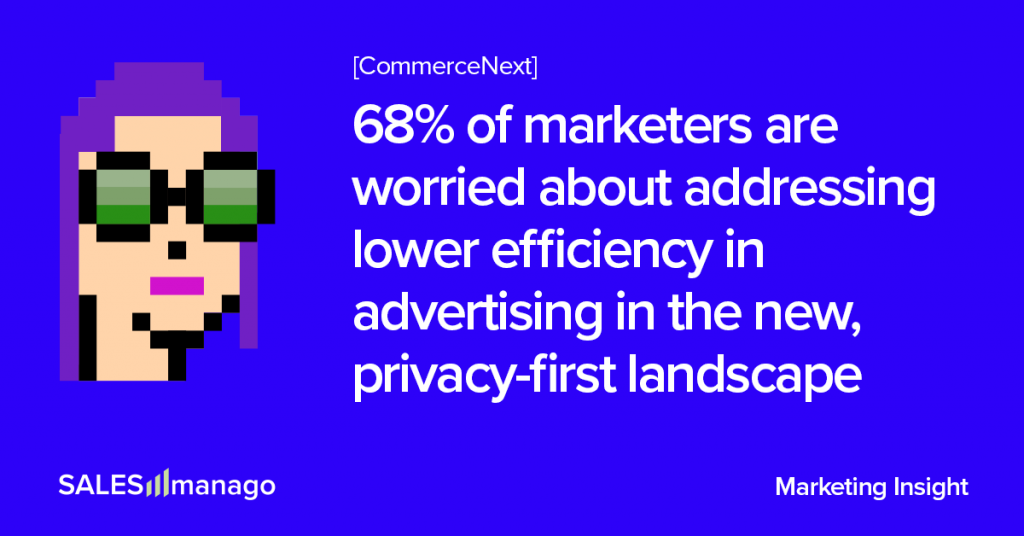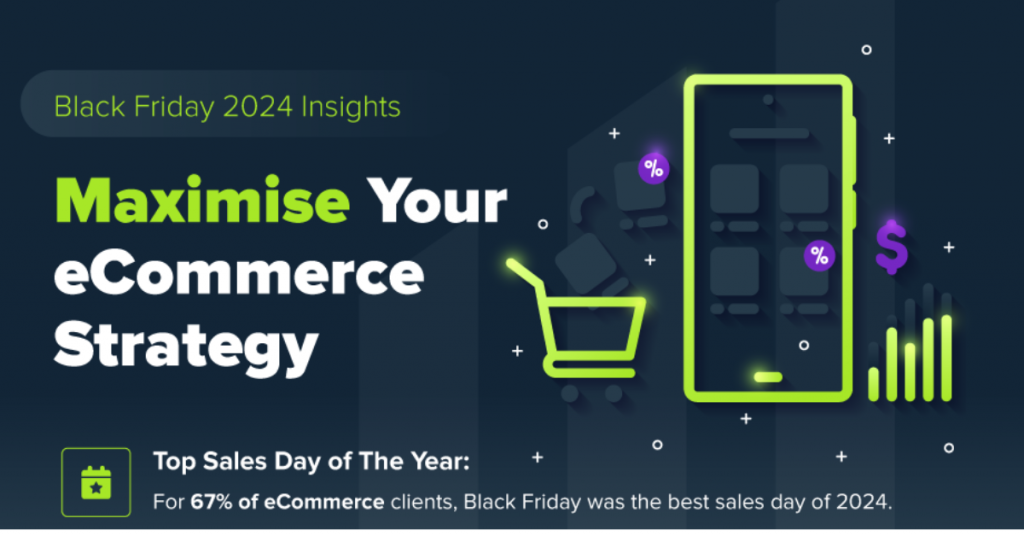
A recent survey from CommerceNext shows 39% of retailers and brands are apprehensive about the new privacy, post-cookie environment. The survey also studies their strategies for navigating through it. A staggering portion of eCommerce seems to be unaware of the role zero-party data can – and will – play in this new, privacy-oriented reality. Why is eCommerce, apparently, on its way to starve the golden goose?
In this article, we take a closer look at the attitudes of marketers towards the changes, the strategies they plan to employ and the problems they expect to encounter. We also analyze the possible causes of zero-party data blindness and address the doubts the industry may feel about them. Finally, we will explain why zero-party data not only complements first-party data, but is actually the only viable answer to the privacy-first trend.
Conclusions from the survey – what eCommerce apparently doesn’t know?
“This brief report summarizes how retailers are feeling about and prioritizing their marketing tactics and measurement tools within a first-party data only environment.” – we read on page 4 of the survey report. While we understand the context, the phrase “first-party data only environment”, describing this privacy-first reality, cannot be further from the truth.
Third-party and first-party data do not exhaust the catalog of dataset types essential for eCommerce. To organize the knowledge necessary to navigate through the rest of this article, let’s remind ourselves of the basic definitions.
First-party data
First-party data is first-hand information collected through cookies and other tracking technologies by companies from their recipients.
Third-party data
The data that has been accumulated by many sources across the Internet, gathered by a data company with no direct connection to the consumer, and sold to an eCommerce entity in clusters.
Zero-party data
It is the information explicitly given by the customer, which is proactively and voluntarily shared. Unlike the first- and third-party data, zero-party data refers to all kinds of information requested by brands and provided directly by customers.
Now imagine, you run a brick-and-mortar store. Would you just observe the behavior of the customers( take notes on what they are looking at, etc.) with no attempt to make direct contact (first-party data strategy)? Or maybe you would go to the mall’s security and ask for the video records to track the traffic patterns of the customers around the building to generate the best offer you can make for them (third-party data strategy)? No, such actions would move you away from the customer, the best action to undertake is to simply ask “How can I be of help?”.
The reason for the prevalence of first-party and third-party data use in eCommerce was never their superiority over direct contact. It was the lack of technological possibility to collect, manage, and action zero-party data.
In the meantime, the advancement in technology in recent years is enormous. Things you didn’t even consider a few years back are now not only perfectly possible but, for various reasons, have become a necessity. First, no third-party, as well as first-party data, can really fulfill these requirements:
- 63% of consumers expect businesses to know their unique needs and expectations. (Salesforce Research)
- 83% of consumers are willing to share their data to create a more personalized experience. (Accenture)
- 79% of customers are willing to share relevant information about themselves in exchange for contextualized interactions in which they’re immediately known and understood. (Salesforce)
- 74% of consumers say “living profiles” with more detailed personal preferences would be useful if they were used to curate personalized experiences, products, and offers. (Accenture)
- 80% of consumers are more likely to purchase a brand that provides personalized experiences. (Epsilon)
Another is, of course, a shift towards the privacy-first focus of the customers, regulators, and Big Tech. 92% of customers appreciate companies giving them control over what information is collected about them. (Salesforce). The regulators comply as does Big Tech. What is the eCommerce answer?
How do retailers feel about the new, privacy-first landscape?
Legal Regulations and Big Tech follow-up kills third-party cookies
More and more, we are seeing new data privacy regulations. California Consumer Privacy Act (CCPA) gives consumers more control over the personal information that businesses collect about them. The CCPA regulations explain how to implement the law. It gives the consumer i.eg. the “Right to be forgotten” or the right to opt-out of the sale of their personal information. General Data Protection Regulation (GDPR) gives EU citizens new control over their data as well as their interactions with companies. And these are only the most important regulations. HIPAA, ECPA, COPPA are other examples.
Big Tech complied and started putting in place its own privacy measures. First, Safari killed the tracking cookie. Then, the iOS14.5 update limited the use of device IDs. Soon, Chrome will be eliminating the 3rd party cookies. All of these changes are chipping away at how the retail and eCommerce industry has done marketing for years.
How do marketers feel about it?
The participants of the CommerceNext survey feel that they have more to lose than to gain from the rise of the privacy-first environment. Most of the answers reflect a “negative” to “neutral” attitude towards the changes. It is worth mentioning that the participants of the survey were divided into Digital First Retailers (started online and are digital natives) and Incumbent Retailers (started with stores, catalogs, or as wholesale brands). The first group is, naturally, more worried.
- 46% of Digital First Retailers are negative towards the changes with only 34% of Incumbent Retailers being negative.
- 32% of Digital First Retailers described their attitude as neutral, with 50% of neutral Incumbent Retailers respectively.
The legitimate challenges include reduced precision of targeting, fewer data points for accurate measurement and tracking. These concerns are expressed equally by both groups of participants
- 68% are worried about addressing lower efficiency in paid advertising
- 58% fear lower targeting precision in digital advertising
- 49% worry about having fewer data points in digital marketing performance management
To sum up, the marketers fear for the future performance of their current tool stack. They are not considering any new possibilities with the paradigm shift. At the moment, the only solution in their minds seems to be first-party data.
How will marketers react to a privacy-first world?
The big turn towards first-party data
As the survey authors point out: “With the loss of third-party data, retailers are investing in strategies that will help them collect and leverage data they already have access to (first-party data). and measure that data more effectively to monetize the right acquisition and retention tactics”.
Retailers plan to use first-party data for:
- retention, 48%
- marketing, 44%
- on-site personalization, 39%
- incentivize users to log in 38%
We conclude that the marketers focus on data they already have and already are familiar with.
Why the blindspot? Analyzing the lack of zero-party data driven strategies for privacy-first landscape.
eCommerce may not know, how to collect and utilize zero-party data
This is perfectly fine. Since the introduction of eCommerce, companies have struggled with the problem of anonymity. It was simply impossible to approach each customer visiting the website and ask “How can I be of help”. Most companies were forced to collect first-party data, to gain implicit knowledge about how attractive their offers were and deduct the customers’ preferences from their behavior. Larger ones could even afford to buy access to third-party datasets.
Although direct contact was always the best source of customer information, no one thought it was possible online. The future seemed to be ever-evolving tracking and AI-backed algorithms. One-to-one commerce didn’t look like it was coming back.
In these circumstances, it is hard to wonder why everybody in eCommerce is focused on sharpening current tools and methods, rather than actively looking for ways to change the paradigm. Marketers are always looking for new improved editions of tools they have been using for years. Anything to gain an edge over their competition.
And to be fair – until just now they were right. There were no tools allowing for seamless collection, management, and actionizing zero-party data. Earlier this year saw the release of SALESmanago’s Customer Preference Center as a direct response to this gap. It is the first zero-party data-oriented Customer Data Platform on the market. For some time, it will remain the only such tool on the market. While it will still support the use of third and first-party data, third-party data will not be around much longer. In fact, first-party data will end up being a supplement to the main player, zero-party data. This is because it is the best source for customer information.
eCommerce still has a problem with data management
The CommerceNext survey reveals one more thing about eCommerce. Many companies, particularly Incumbent Retailers type, still have a problem with data management.
In the survey, we read: “Digital-first retailers, who presumably have solid customer data management tools in place (single view of the customer, etc.) are focused on challenges relating to prioritizing use cases and the data activation needed to execute against these use cases (51%). While incumbent retailers are equally focused on use cases and activation (50%), they first have to tackle their biggest challenge around customer data management (64%). This truly reflects the infancy stage we are still in when it comes to the discipline of first-party data activation.”
This helps us understand why marketers are not thinking about zero-party data or even CDP. It is not because they don’t like the tools. It is because the tools are not even on their radar.
This lack of awareness might have been okay in the past. However, in the modern world, it may prove to be fatal, especially for Incumbent Retailers. We predict Digital First companies are able to operate more freely in an online environment and are more up to date with technology. They will be the first to jump on the zero-party data train. It might even broaden the gap between them and the more conservative, classic retail-based competition.
Why is zero-party data the only constructive way to go in the privacy-first world?
As we pointed out in the first chapter, collecting and actionizing zero-party data closely resembles an actual conversation with the customers. Whereas gathering third-party and even, to a degree, first-party data requires, well … something like watching surveillance tapes.
Data Privacy regulations are restricting the indirect methods of customer information gathering. It is a trend clearly seen by everybody in the industry. The writing on the wall is correctly read by Big Tech as seen from its reaction.
In stark contrast, we cannot imagine a world where regulators will prohibit communications between commerce and customers. This would mean prohibiting any conversation at all.
Zero-party data driven strategies to solve data privacy issues once and for all. It also signals the revival of personal, one-to-one commerce. The surveys and studies cited in chapter one indicate that this is exactly what the customers want.
How zero-party data based relationships can grow over the years to prolong CLV of your customers?
Zero-party data is a powerful tool for relationship building. The authors of CommerceNext were asking about the biggest challenge of the privacy-first world. Aaron Magness, CMO at Thistle, said it is keeping interested customers engaged without having to retarget them. This means winning them over from their first interaction with the brand. “The changes going on in the Facebook and Apple ecosystems make it more challenging and a higher lift for marketers to be relevant to the right people at the right time. We need to ask ourselves ‘How do you tell your brand story on that first visit?’ How do we get more information and more relevancy so that when a customer does come to your site, they understand immediately and don’t need to be reminded through retargeting.”
Well, you don’t have to worry about targeting, if the customer shares data voluntarily when incentivized with better-personalized offers. As the multitude of surveys cited at the beginning of this article suggest, the customers want to and will do it.
Throughout their lifecycle, a customer’s relationship with a brand changes. Initially, they may be reluctant to share their story, so the first data requests should be low-key and reasonable, preferentially accompanied by a tangible incentive. In other words, don’t force it! Adapting to the client’s pace is crucial here.
As the relationship develops, they will begin to trust brands and decide how intimate the interactions should be. When the relationship elicits more engagement, the greater the chance of gaining valuable personal information to better tailor the communication.
And you don’t have to worry about presenting your brand’s whole story in a snapshot. As in the case of the customer data, the information about your brand will reveal itself to the customers in this process. A zero-party data approach to the customers may become part of your brand’s story. A story of a brand, building its success on personal relationships and deep knowledge of customers’ needs, developed in a dialog.
 Follow
Follow
















